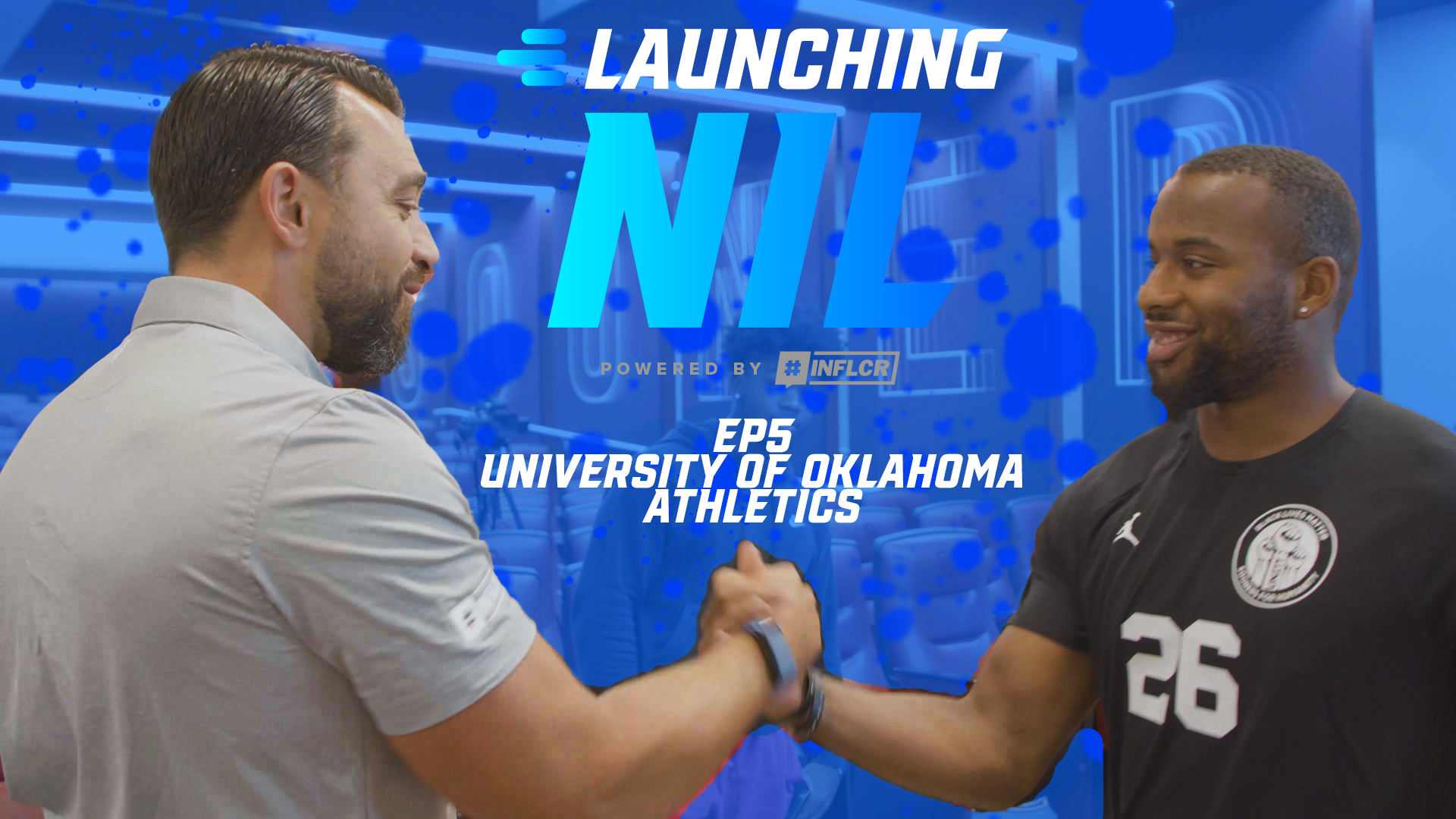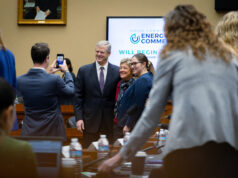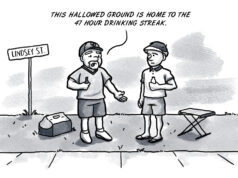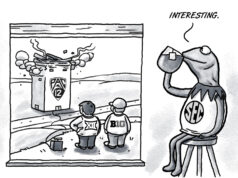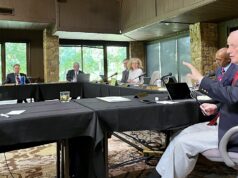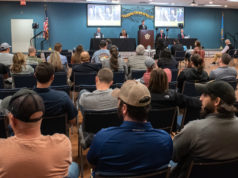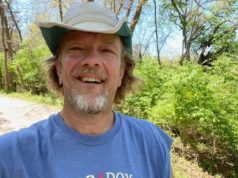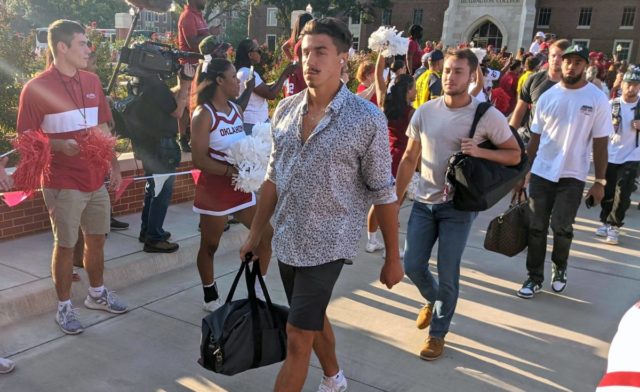

Lost in the shuffle of Lincoln Riley’s abrupt departure and the University of Oklahoma’s search for a new head football coach was a Dec. 1 announcement that the OU Athletic Department has streamlined the process for student athletes to land name, image and likeness opportunities.
The NCAA adopted rules for NIL deals in June, allowing college athletes to profit financially through agreements with businesses. Now the University of Oklahoma has launched OU Exchange, an online platform created in partnership with the Alabama-based athlete branding company INFLCR.
Purchased as part of a contractual agreement between INFLCR and the university’s athletic department, OU Exchange is free for both student athletes and businesses, and “neither OU or INFLCR is a party to or gets any part of the NIL agreements,” according to senior associate athletics director Kenny Mossman.
The university created its own NIL policy earlier this year, outlining certain restrictions, and the launch of OU Exchange corresponds with an announcement that OU will allow co-branding with student athletes, meaning school trademarks can appear within NIL agreements.
How the new OU Exchange works
Mossman said OU Exchange allows businesses to contact athletes, and vice versa, for prospective NIL deals while maintaining university oversight.
“Think of OU and Exchange as one,” Mossman told NonDoc. “The platform was developed by our partner, INFLCR, but we will operate it on a day-to-day basis. Once a business or transaction application goes into Exchange, the compliance office is notified to review the application. Based on the nature of the application, it might require another office or two in the department to make a review, and compliance makes those inquires before approving. The most common review would probably come from our branding and licensing office.”
The applications then are reviewed to make sure they meet university branding standards and comply with NCAA rules.
“We don’t anticipate a lot of denials,” Mossman said. “We expect the vast majority of these transactions and businesses to be approved.”
NIL agreements can be lucrative for some
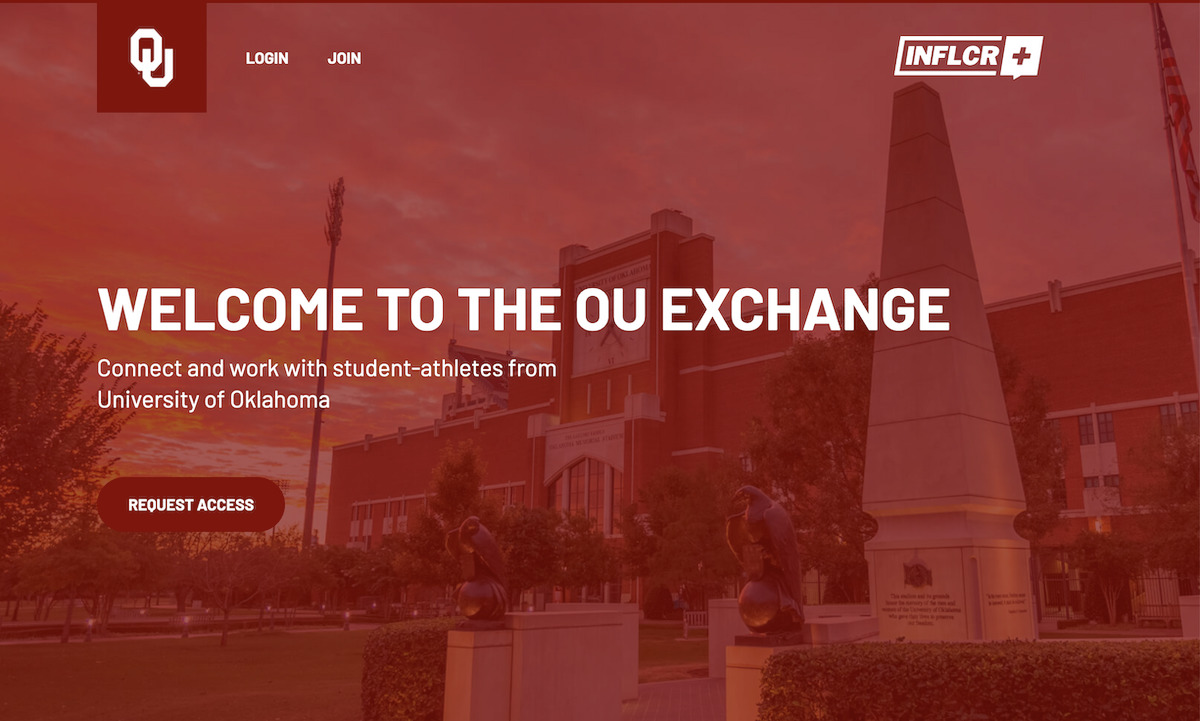
Since their introduction, some NIL agreements have been lucrative, mostly for high-profile athletes. Alabama quarterback Bryce Young has made an estimated $1 million from NILs so far. Prior to the 2021 season, now-transferring OU quarterback Spencer Rattler signed a deal with Cameo, an app that allows people to pay for personalized messages from celebrities. He also received a pair of vehicles as part of an NIL agreement with the Norman-based Fowler Auto Group.
Rattler ultimately lost his starting job as OU’s quarterback halfway through the 2021 season, making his NIL agreements a “case study” for the burgeoning business of marketing with college athletes.
Opendorse, a competitor to INFLCR, released data in November showing a breakdown of its NIL deals so far by sport. College football has accounted for 35 percent of deals facilitated by Opendorse and more than 55 percent of the compensation.
But athletes in other sports have also made money. Fresno State University basketball players Haley and Hanna Cavinder have used their notoriety on social media to land deals with several companies.
Professional sports teams have also been signing NIL deals with college athletes. The Atlanta Braves signed NIL agreements with a University of Georgia gymnast and a Georgia Tech football player. In California, the Low-A minor league Stockton Ports baseball team signed an NIL with a University of Pacific college basketball player.
OU: ‘The goal is to maximize opportunities’
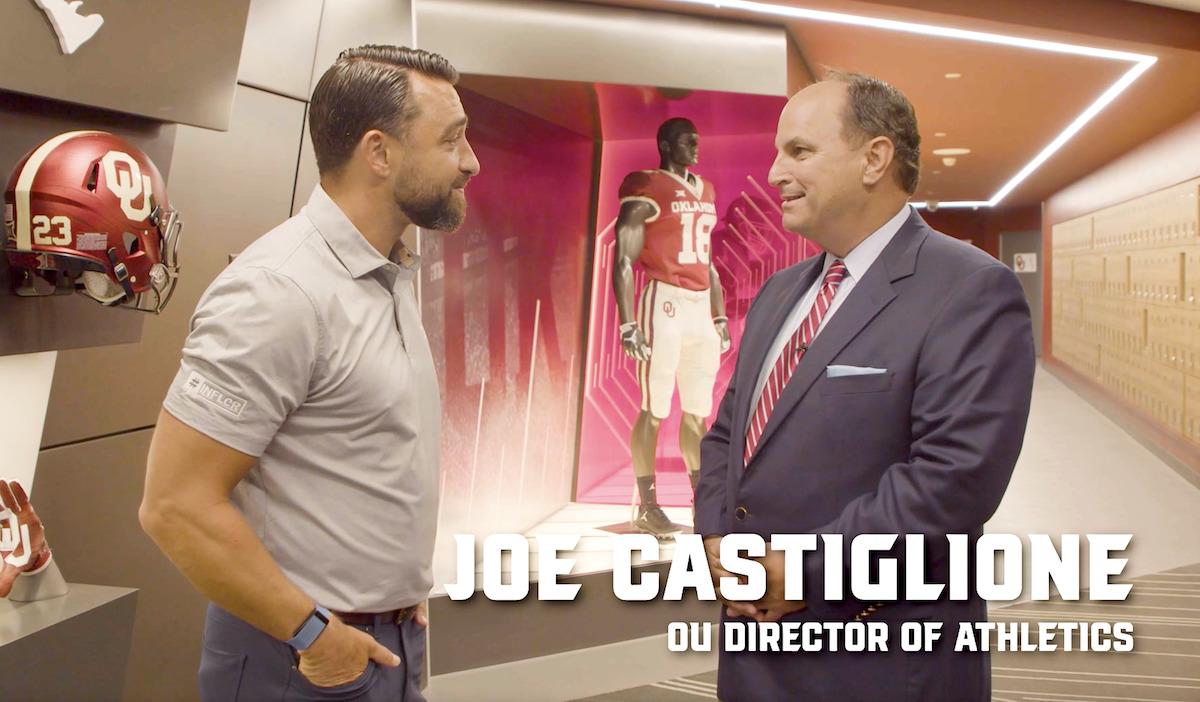
In announcing the OU Exchange platform, Athletic Director Joe Castiglione said the INFLCR-based platform makes OU a “first mover” in the college athletics landscape.
“This is exciting because now we have our own system that we can position our student-athletes for success,” Castiglione said in the SoonerSports.com post. “This new platform creates a process that is easy, effective and compliant. It’s much like a job fair that never ends. Businesses and our student-athletes can hold two-way conversations that result in new efficiencies.”
OU’s press release, however, did not mark Castiglione’s first time speaking publicly about his department’s agreement with INFLCR and his efforts to support student athlete NIL opportunities. In a September video posted by INFLCR regarding the company’s initial presentations to OU student athletes, Castiglione said his department tries “to create (an) absolute world-class experience for them in every way, shape or form.”
“What we’re trying to do is think through how we can help our student athletes help themselves, because that’s what this is about,” Castiglione said. “It’s going to be their own opportunity that they develop. How they know what a brand means — they’ve heard that word for years, I know that. But, literally, what is their brand? How’s it going to be defined? How do they want their brand to be interpreted by the people they are trying to influence?”
In the promotional video, INFLCR founder and CEO Jim Cavale tells a room full of OU athletes that they should be thinking about their long-term future and how technology can offer them easier opportunities in the short term.
“Understanding that, regardless of how much money you’re able to make with your NIL, the fact that what you build while you’re on this stage — how you use this stage to set the stage for the rest of your life — that’s what’s most important,” Cavale said. “The question is, ‘How can you use the spotlight while you’re here to set the stage for the rest of your life?’
“Guys, NIL and building an NIL business is just as hard as getting here and earning a scholarship. You get out what you put in, just like everything else.”
The video (embedded below) features an appearance by Toby Baldwin, OU director of compliance, who asks Cavale to explain INFLCR’s array of apps. Cavale mentions Cameo as a way to make a little bit of money and says, “you don’t have to spend a bunch of time doing it.”
Cavale advises the athletes that their four years in college will go by quickly and that they should “make the most of it.”
“Right now, there are influential people that will take your phone call, that will read your DM and respond,” he says in the video. “There are so many ways that, with humility, you can leverage this platform right now.”
The video includes brief conversations between Cavale and OU football players Michael Woods, Eric Gray, Savion Byrd, Kennedy Brooks, Jaden Knowles and Caleb Williams.
Knowles asks Cavale about the value of getting verified with the elusive “blue check” on social media sites like Twitter and Instagram.
“You guys put way too much focus on it, and I hear about it constantly, like, ‘Blue check, blue check, blue check,’” Cavale says. “But I understand why you want it, and we can help. We can help you do that because we have a portal that Oklahoma athletics is on and can use to submit a verification request, which is better than you doing it yourself.”
Cavale and Castiglione also discuss the challenges and opportunities of social media.
“There’s more responsibility now. Before this time in their life, they just thought it was fun. And sure, there is some fun to it,” Castiglione says. “But they have a digital footprint wherever they go, and it’s going to follow them the rest of their life. So they want to use it to their advantage.”
Like Castiglione in the video, Mossman said the idea behind the OU Exchange is to create a formal process that’s simple for everyone involved.
“The goal is to maximize opportunities for student athletes by simplifying the contact process,” Mossman said. “There was no formal communications process before we introduced this platform. Our hope is to make it easy for businesses to contact our student athletes and vice versa. One of the things we like about Exchange is that it allows entrepreneurial student athletes to reach out to registered businesses, so the initiation can truly be a two-way process. This platform also tracks the earnings made by the student-athletes and provides them with the appropriate income tax documentation.”
In the early months of NIL being legal, Mossman said the process often has been disjointed.
“Before this, businesses had to track down a student athlete through social media or the student athlete’s representatives,” Mossman said. “Now they can link directly.”
According to INFLCR’s own announcement, OU is joined by Arizona, Boise State, DePaul, Florida, St. John’s, Southern Miss, Syracuse and Texas A&M as “early adopters” of the company’s local exchange portals.
INFLCR’s University of Oklahoma NIL preview
